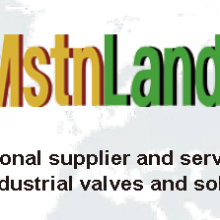Graphene Based Oil Absorbing Sponge ball
USD $2.77 - $90.15 /Box
Min.Order:1 Box
Quick Details View All >
MstnLand International Company
Product Details
Graphene Based Oil Absorbing Sponge ball
Product Description
MstnLand’s graphene based oil absorbing sponge is a kind of graphene based composite sponge which combines oil - and hydrophobic graphene with common commercial porous sponge. It’s not only has the high strength and high resilience of sponges, but also has the hydrophobicity of graphene. It can be used to deal with the oil leakage accidents in the process of oil exploitation, refining and transportation, as well as the organic solvent pollution used and discharged in the chemical industry. Graphene-based oil sponge can absorb 100 times its own weight of various oil and organic solvent pollutants. When the sponge is treated with oil spill pollution instead of oil absorbing felt, it can still float on the water surface after absorbing oil, which is easy to salvage and recycle, and it can be reused more than thousands of times.
As shown in the figure above, add a simulated sea water containing 3.5% NaCl and pour 10 mL crude oil into the tank. A graphene-based oil sponge is held with tweezers and the oil on the water surface is absorbed back and forth. Under the action of the sponges' lipophilic and capillary forces, the crude oil from the water surface quickly penetrates into the sponges' pores. With the recovery process, the oil storage space of sponge gradually decreases, and the oil absorption rate decreases compared with the beginning. After 90s, most of the oil is recovered, and the sponge can continue to float on the water surface, which is conducive to salvage and recovery.
The water bottom of the beaker is trichloromethane stained with Sudan Red III. Dip the graphene-based oil sponge into the water bottom, and the trichloromethane is immediately adsorbed without absorbing water. It can be seen that in addition to oil recovery on the water surface, graphene-based oil absorbing sponge also has good selective adsorption for underwater oil or organic solvent leakage, and can be applied in the field of underwater oil and water separation. Sponges are good at oil philicity and hydrophobicity, and have strong selective absorption for heterogeneous oil-water mixing systems. They have great advantages in waters where large mechanical recovery equipment is difficult to operate, such as shoals and riverbanks.
Technical specifications
Function: Can be used for oil slick, organic solvent recovery, which can be recycled by extrusion or negative pressure, after regeneration it can be reused.
Item | Parameter |
Color | Brown/black |
5ppi~60ppi | |
15~50kg/m3 | |
Non-standard and customizable | |
Non-standard and customizable | |
Applicable materials | Oil slick, organic solvent and so on |
The above is the electron microscope scanning of the corresponding microstructure of blank sponge and graphene-supported sponge magnified 500 times (left) and 3000 times (right) respectively. Figure a and b show that the skeleton of blank melamine sponge is smooth and interwoven, forming multistage micropore structure with pore size ranging from tens to hundreds of microns. Therefore, oil or organic solvents can freely pass through the internal pores; The cross-linked skeleton structure of the sponge can also effectively support the weight of the adsorbed oil, giving the sponge a larger oil absorption capacity. According to the surface wetting theory, the material surface wettability is related to surface roughness and chemical properties. Because the blank sponge skeleton surface is smooth and flat, and contains a large number of hydrophilic groups, the oil-water separation selectivity is poor. As can be seen in Figure c and d, a large number of clumped and irregularly distributed graphene coatings appeared on the surface of the skeleton structure of the graphene loaded sponge. After local amplification, it could be clearly seen that there were crumpled protrusions with micro or nano size attached to the pore wall, which greatly increased the roughness of the sponge.
Product advantages
Super hydrophobic, contact angle can be more than 150°;
The adsorption rate is high, the adsorption capacity of crude oil can reach 120 times of its own weight;
High desorption rate, up to 95%;
After repeated use, the adsorption rate remains high after up to thousands of adsorption-desorption.
New graphene-based oil sponge (lift) VS graphene-based oil sponge that has been reused more than 1,000 times (right)
Graphene-based oil sponge water contact angle test diagram
Applicable fields
Oil refining and petrochemical industry containing particulate matter catalytic oil slurry or other production units of oil slurry filtration Processing oily sewage in printing and dyeing,
Production enterprises of carbon black raw materials, Marine fuel, coking raw materials, needle coke/asphalt raw materials, residue cracking and hydrogenation raw materials, etc.
Contact Supplier

You May Like

New Products
Popular Searches
Recommended Products
Find Similar Products By Category